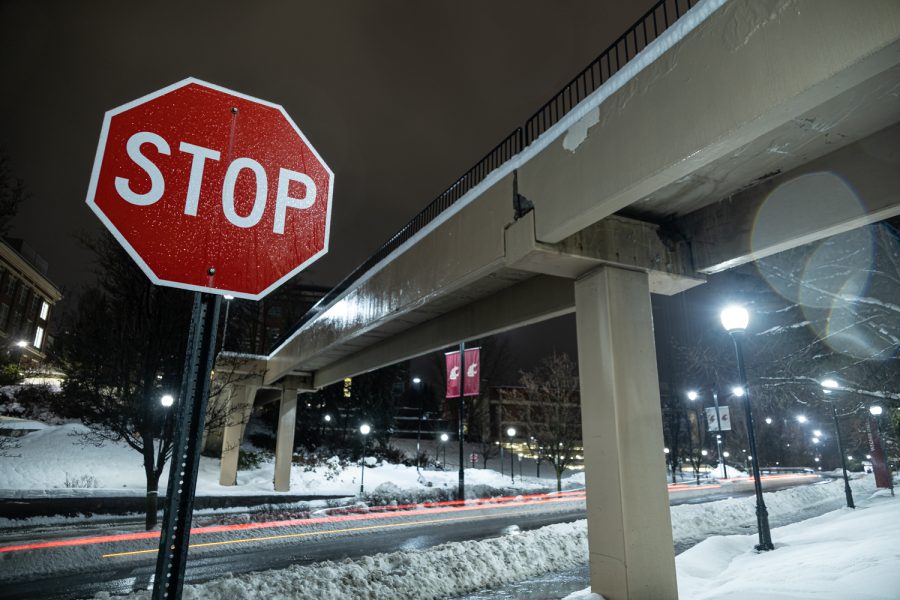Facilities Services works on next steps for Troy, Johnson Tower bridges
Possibility of Troy bridge getting torn down; assessments currently in progress
The pedestrian bridge between Troy Hall and Wegner Hall over Stadium Way remains closed to the public, Thursday, Jan. 6, 2022.
January 14, 2022
WSU Facilities Services will keep the Troy and Johnson Tower bridges closed out of caution while they solidify plans for construction work.
In 2019-2020, Facilities Services conducted a study on all of the bridges because the Beasley Coliseum bridge had some problems, including pieces of the bridge breaking off, said Joe Kline, assistant vice president of Facilities Services Capital and Operations.
When the initial study results about the Troy and Johnson Tower bridges came back, Kline said there were a significant number of issues. The root problem was water getting into the structural concrete and rebar of the bridge.
“That includes concrete spalling off, and the rebar in it corroding,” he said.
Kline said the freeze-thaw cycle as a result of Pullman’s harsh winters impacts the condition of the bridges. This cycle also includes corrosion and degradation due to the salt and freezing snow on the bridges.
After the study, Facilities Services brought in another firm to analyze how much it would cost to fix the bridges, Kline said.
Facilities Services is starting to repair the Johnson Tower bridge first because the cost is much more reasonable, he said. They are almost done working on designs for the bridge.
Kline said they expect the project to be completed around summertime.
Problems with the Troy bridge are much more significant and cost more money, he said. Because the bridge crosses Stadium Way, Facilities Services hired a consultant to look at pedestrian traffic and how that impacts the necessity of a bridge.
The overall goals of the analysis include assessing how much it will cost to fix the bridge and how long those repairs will last, Kline said.
Fixing the Troy bridge could cost up to $1 million, he said. Their first priority is deciding whether fixing the bridge is worth it. If repairing it does not make sense financially, they may just decide to take the bridge down altogether.
Kline said there will likely be improvements made to the crosswalks on Stadium Way if the bridge gets taken down.
Junior English major Sidney Riggan said he does not like to use the crosswalks on campus because it inconveniences drivers.
“I like the pedestrian path bridges because it means I can just go from one side of that road to the other without incurring traffic,” Riggan said.
Some people have discussed that putting more people on the Stadium Way crosswalks is more harmful than walking across the bridge, Kline said.
“You know, I would say we’ve looked at it all,” he said. “We’ve gotten structural engineers in to help us, and we’re proceeding in an abundance of caution knowing that there’s probably not a perfect answer to how you deal with this.”











